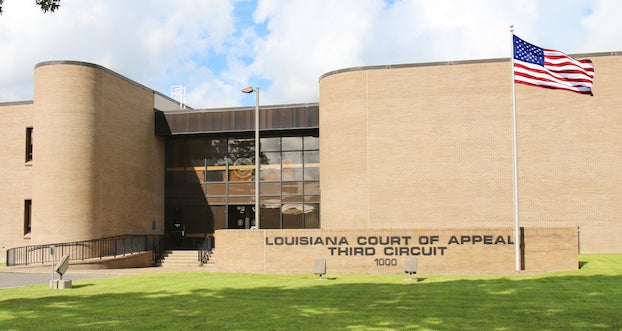Finding a niche in male cheerleading
Published 2:15 pm Sunday, March 10, 2013
Male cheerleaders may still have their skeptics but they are making a comeback in previously female-dominated squads.
High school, college and the newer All Star teams have broadened the field not only for male participation but in competition and demand for talent.
Nelton Bourque, who cheered for McNeese State University and the University of South Alabama, said cheering has been dominated by women for such a long time, it has been hard for some people to understand why males would want to participate.
“There is so much more to offer male cheerleaders in 2013,” he said. “As more and more males start cheerleading, it is only a matter of time until the false stereotypes will fade away.”
Cheerleading originally started as an all-male activity. According to The International Cheer Union, in the 1880s students at Princeton University started an all-male “pep club” that evolved into “cheers” for campus sports. In 1884, Princeton graduate Thomas Peebles introduced the new cheering concept to University of Minnesota students for their football games. This, along with a “yell team” for the university’s rugby players led to an all-male team to lead sports fans in “yelling.”
These crowd-motivating teams began to add routine chants, synchronized movements and megaphones while also becoming more prevalent at various sporting events. According to the Union, the first 25 years of cheerleading were male dominated. However, women started to become incorporated in the early ’20s. World War II was a turning point when many college-age men left to fight and their female counterparts took the field.
“A lot of people do not know that cheerleading started out as an all-male sport,” Bourque said. “Anyone who knows what it takes to be a male cheerleader understands that they are incredible athletes and deserve respect for what they bring to the sport.”
Raymond Ceasar, who has cheered at McNeese and now serves as a cheer coach, said the introduction of All Star cheerleading has brought a more challenging and competitive aspect to cheering, increasing male interest. All Star teams, sometimes made of students from different schools, take their routines off the field and instead compete against other teams.
Ceasar said there are fewer cheerleading stereotypes as boys are starting at an earlier age — he has personally trained students as young as 4. Mike Strahan, a former cheerleader and cheer coach at McNeese, said the largest change in cheering is the increased competition. More gymnastic elements, such as tumbling, have been added, along with stunting, making routines more intense and difficult. He said cheerleading is attractive as it provides a way to stay fit while college teams can offer scholarship and sponsor perks.
Strahan said the typical stereotypes he encountered were that all the males on the team were gay or that they were not athletes. He said on all but one of the squads he was “the token gay.” However, he is seeing a change.
“There is definitely an increase in male participation because I think that ‘gay’ stigma is becoming less of an issue,” he said. “And also males are now in this age more comfortable with their sexuality and realizing that what other people think is not relevant.”
Marcus Hardy, a former McNeese cheerleader, said when other students gave him a hard time about cheering he would simply ask them if they could hold a girl with one hand or explain he suffered injuries just like in any other sport. Hardy’s friend, McNeese cheerleading captain Austin Bourgeois, said he has gotten stereotypical comments about gay male cheerleaders but it doesn’t bother him. Cheering has given him a sense of accomplishment, and he sees it becoming more accepted as the cheer world becomes better known.
Now students, such as high school senior Wes Guidry, are following in the footsteps of cheerleaders like Hardy and Bourgeois. Guidry, who has been training for almost four months to be on a college team, has never cheered before and is ready to make his own mark in cheerleading.
“This was something I really wanted to do,” he said. “It’s actually respected as a sport because the guys on the squad really bring the strength to the team.”
(Special to the American Press)





